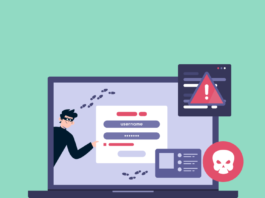Today, distance learning is not just a popular trend but a pressing necessity, especially in light of the global changes we are witnessing in education. This form of learning opens up new possibilities to quickly and affordably receive quality education, learning from the best teachers in the world.
The e-learning market is fast-growing and will remain so in 2024, according to experts from Light IT Global, an education software development company with a 15 years’ experience of working with dozens of accredited educational institutions, hundreds of tutors, content creators, and education providers. The experts shared their insights into how to create an educational platform for distance learning, based on the example of a popular school specializing in preparing students for college admissions in the USA.
Origins of the idea
The client is a leading school preparing students for college admissions in the USA. They offer international IB programs for students from grades 3 to 12. With campuses in the USA, China, the UK, and the UAE, the school identified the need for an online learning platform in 2020.
The primary target audience is teenagers. Their needs include an intuitive interface, stylish design, and advanced digital tools to enhance the quality of learning. To achieve this goal, the school chose Light IT Global, a company with significant experience in developing software for the EdTech industry.
The main platform requirements were one-on-one online learning, supplemented by live video chats, a whiteboard, and text chat, as well as the ability to connect to lessons immediately or schedule them.
Another requirement was an advanced filtering system for easy searching for teachers by subject, course, location, and time zone.
Planning and design
Because the design had to be oriented towards a teenage audience, intuitiveness and attractiveness became the top priorities. As a result, the platform has been developed as an inspiring, easily accessible solution.
Special attention has been paid to creating a creative environment where students can improve their leadership and communication skills.
Education experts have been involved in content development. Collaboration with partners has ensured the quality and variety of educational materials. Work on content is done according to the “peer-to-peer” principle, which helps maintain relevance and interest in learning.
Moreover, the client and their team had to address the major challenges of modern education: high cost, insufficient motivation, and the need to adapt to digital technologies.
The online platform has become the answer to these challenges, providing students and teachers with a tool for effective, mutually beneficial learning.
Technological solutions
According to Light-it experts, it is advisable to start with a Minimum Viable Product (MVP). This provides opportunities for faster experimentation and feedback. It is also reasonable to use Twilio for communication, Stripe for payments, and Google for authentication. Such choices ensure the stability and scalability of the system.
In fact, the architecture should be designed with scalability in mind. Fault tolerance is provided for the reliability of online classes. The database is designed to securely store user data, complying with GDPR and CCPA regulations.
Artificial intelligence can be used for personalized learning. Precise matching algorithms consider students’ requirements. Real-time video communication is complemented by a low-latency whiteboard and text chat, enhancing the efficiency of short sessions.
The platform must always protect students’ data. The interface should be developed to be simple and intuitive. Parental consent and account deletion features should be provided, ensuring safety and convenience for each user.
The solution can integrate third-party services for ease of use. This includes payment systems, communication tools, and calendar management. This approach will ensure a comprehensive learning process.
Thanks to multiple technological solutions, the online learning platform will provide effective mutual learning and become accessible, reliable, and motivating for students and teachers.
Implemented platform solution
Another example of an implemented solution is a secure, user-friendly web platform for online learning that connects students with their peer tutors. They can help each other learn, improve grades, or prepare for exams.
Users can choose roles: student or tutor, and there are more than 50 subjects to study. Lessons are conducted online through video, text chat, a virtual whiteboard, and file sharing. Lessons can be free or paid. The price is set by the tutor. Students choose tutors through filters and matching algorithms. Lessons can be booked in advance or held immediately. If an urgent lesson is needed, the system shows available tutors.
To combat dishonest users, a penalty system has been introduced. If a user misses two lessons or cancels less than 12 hours in advance, their ability to book free sessions is restricted. This protects tutors and improves the quality of education.
Stages of educational platform development
The development of an educational platform involves several key stages that transform the initial idea into a fully functional product.
- Project assessment. At this stage, the mobile app development team conducts a thorough analysis of the proposed idea and determines the best ways to achieve the client’s goals. It is important to fully understand what tasks the platform should solve, which features will be most in demand, and which technical solutions will efficiently help achieve the goals.
- Development of basic platform functionality.The team focuses on defining the main functions and capabilities of the platform. Its architecture is developed, taking into account the number of users, methods of interaction, and types of content and access to it, as well as analytical tools.
- Special attention is paid to the development of the platform’s design. It is important for the interface to be as clear and convenient as possible for all categories of users – students, teachers, and administrators. The design should facilitate easy navigation on the website or in the application, ensuring efficient interaction with the platform.
- This is the key stage where all functions for users are implemented. Development includes programming all necessary elements to meet the needs of each category of users.
- The team tests the product at various stages of development, examining each functional element for errors and checking compatibility with different devices and operating systems. This process helps to identify and eliminate any technical shortcomings before the product is launched.
- Post-launch support.After a successful product launch on the market, the stage of its support and maintenance begins. The team continues to work on improving existing functions and implementing new features based on feedback from users and changing business tasks of the client.
Developing your own learning platform now is a good chance to enter the market in time and take a strong position. The main thing is to create an excellent product that differentiates you favorably from competitors.







